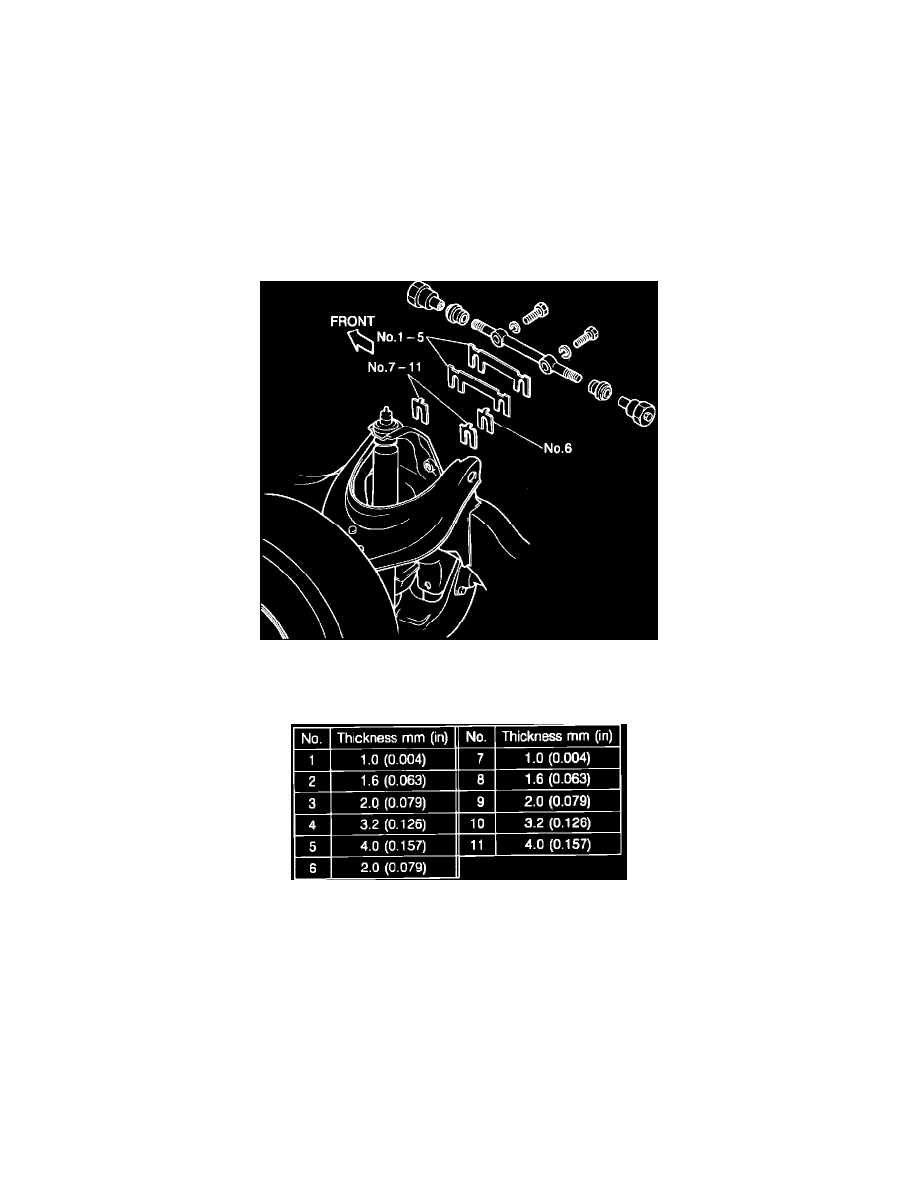Alignment System Information for B Series Truck L4-2184cc 22L 2200 (1988)

Alignment: Service and Repair
Preliminary Checks
1.
Ensure tire pressure is as specified by manufacturer.
2.
Inspect ball joints and steering linkage for excessive looseness. Repair as required.
3.
Ensure vehicle is level and has no luggage or passenger load.
4.
Ensure difference in height from center of wheel to fender brim between right and left sides is equal.
Camber
FRONT
Fig. 2 Adjusting caster & camber. 1986 B2000 & 1987-88 B2200 & B2600
Caster and camber angles are adjusted by adding or subtracting shims. Refer to Figs. 1 and 2 for adjustment shim locations, noting the following:
Fig. 3 Shim thickness chart
1.
On 1986 B2000 & 1987-88 B2200 and B2600, shims Nos. 1 through 5 are used at left and right sides, shims Nos. 7 through 11 are used at front
and rear left and right sides and shim No. 6 (models equipped with power steering) is used at rear left and right sides, Fig. 3.
2.
To change camber on 1986 B2000 & 1987-88 B2200 and B2600, shim thicknesses (front and rear) of 1mm results in a change of 1/4 deg. To
change caster, a shim thickness of 1mm results in a change of 1/2 deg.
REAR
Camber is not adjustable and is set to specifications during production. Whenever camber is moved out of specified angle, check all parts of rear
suspension and body alignment. Repair or replace defective part(s) as required.
Caster
